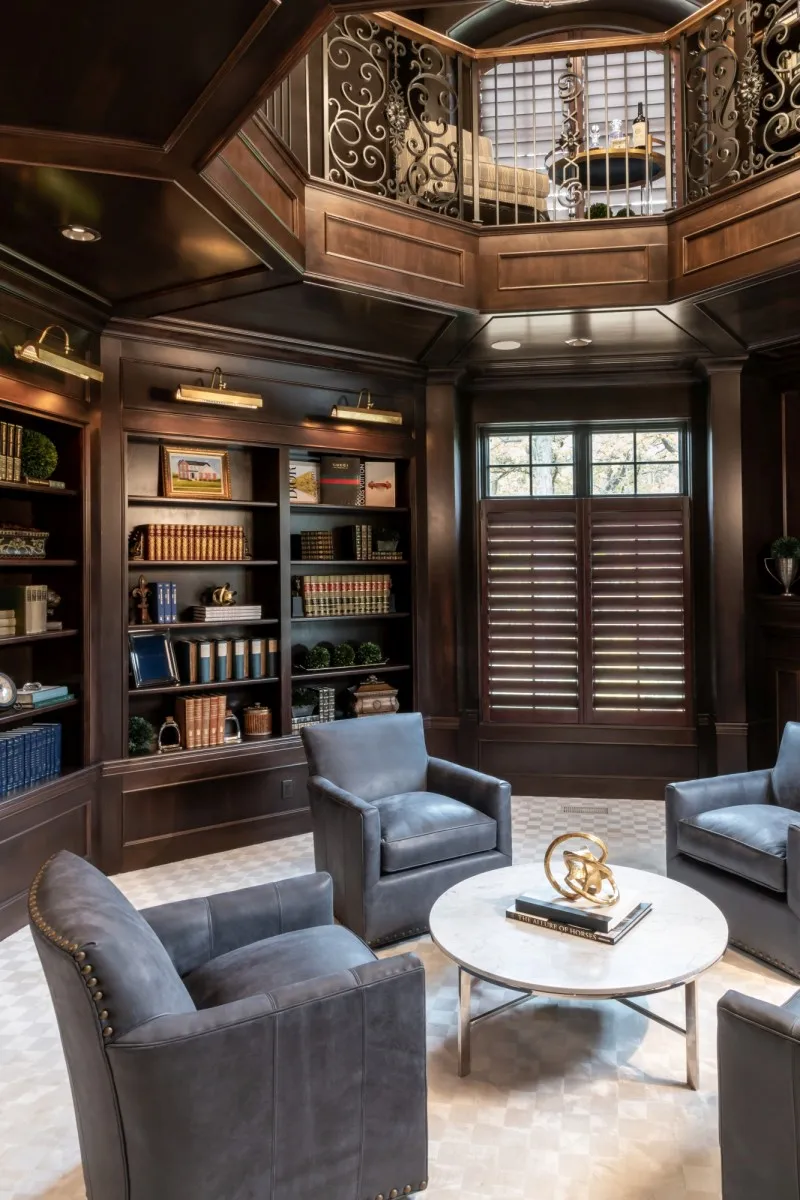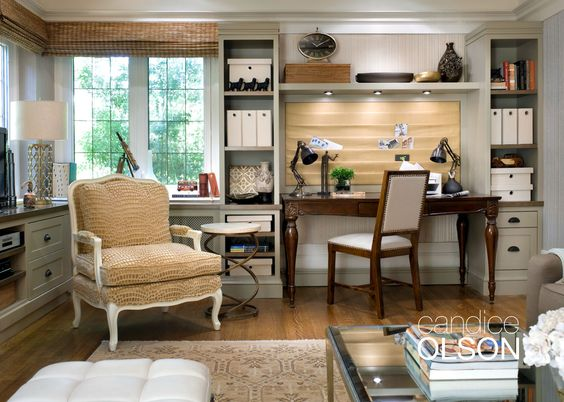The COVID pandemic permanently changed how we use our homes, with an increasing focus on creating functional and comfortable live-work spaces.
One essential aspect of a successful work-from-home setup is the lighting design, which can significantly impact productivity, well-being, and overall satisfaction. In this article, we will look at the principles of good lighting design and offer practical tips for creating an effective work-from-home lighting environment.
Home Office Design by Candice Olson
Understanding the principles of good lighting design
Ambient lighting: This type of lighting provides overall illumination for a space, creating a comfortable background level of light. In a work-from-home setting, ambient lighting is important for maintaining a sense of balance and visual comfort. Recessed and track lighting are examples of common ambient lighting options for home offices.
Task lighting: Task lighting is focused, adjustable illumination designed to support specific activities, such as reading, writing, or computer work. Proper task lighting can help reduce eye strain and improve productivity in your home office. Undercabinet, tape and pendant lighting are typical task lighting found in well lit home offices.
Accent lighting: Accent lighting is used to highlight specific features or create visual interest in a space. While not essential for a home office, it can contribute to a more inviting and aesthetically pleasing environment. Accent lighting can take many forms, from purely decorative artwork to wall and ceiling fixtures.
Layered lighting schemes: A well-designed lighting plan combines ambient, task, and accent lighting to create a balanced and versatile environment that can adapt to various work tasks and personal preferences.

Assessing your work-from-home space
Evaluate natural light sources: Take note of the available natural light in your workspace, considering factors such as window size, direction, and potential obstructions. Natural light can have a positive impact on mood and productivity, but it may also need to be supplemented with artificial lighting to ensure consistent and adequate illumination throughout the day. Natural light sources also significantly contribute to room temperature, and controlling the amount of natural can be useful in maintaining your space’s comfort.
Identify key work areas: Determine the primary work areas in your home office, such as your desk, computer station, or reading corner. These areas will require focused task lighting to support your work activities.
Consider room layout and furniture arrangement: Assess the layout of your workspace, taking into account factors like furniture placement, room size, and potential sources of glare or reflections. This information will help inform your lighting design decisions.

Creating an effective work-from-home lighting plan
Maximizing the use of natural light: Position your workspace to take advantage of available natural light, and consider using window treatments that allow you to control the amount and direction of sunlight entering the room. Be mindful of potential glare issues on digital screens and adjust accordingly.
Selecting appropriate task lighting: Consider adjustable task lights, such as desk lamps or floor lamps with flexible arms, that provide focused illumination for your key work areas. Look for fixtures with adjustable brightness levels and color temperatures to accommodate your personal preferences and comfort.
Incorporating ambient and accent lighting: Supplement natural light and task lighting with ambient lighting sources, such as ceiling fixtures or wall sconces, to create a comfortable background level of light. If desired, add accent lighting to highlight artwork or architectural features, contributing to a more visually engaging environment.
Choosing energy-efficient lighting options: Opt for energy-efficient lighting solutions, such as LED bulbs or fixtures, to reduce energy consumption and save on utility costs.
Ensuring proper lighting control and flexibility: Install dimmer switches, smart lighting controls, or timers to easily adjust lighting levels throughout the day and customize your lighting environment to suit your need's.
Additional tips for optimizing your work-from-home lighting environment
Manage glare and reflections: Position your computer screen and other work surfaces to minimize glare from windows and artificial lighting sources. Consider using matte finishes on furniture and computer screens to reduce reflections.
Consider color temperature and color rendering: Choose lighting with a color temperature and color rendering index (CRI) that suits your personal preferences and work requirements. Warmer color temperatures (2700K-3000K) are generally more relaxing, while cooler color temperatures (3500K-5000K) can help increase alertness and focus. A higher CRI ensures more accurate color representation, which is important for design tasks that require color accuracy.
Incorporate biophilic design elements: Integrate natural elements, such as plants or water features, into your workspace to create a more soothing and calming environment. These elements can also help to diffuse and soften artificial lighting.
Prioritize visual comfort and eye health: Take regular breaks to rest your eyes, and adjust lighting levels and color temperatures to minimize eye strain and fatigue. Make sure your workspace is well-lit, but not overly bright, to maintain a comfortable visual environment.
Conclusion
Well-designed lighting is a crucial component of a successful work-from-home environment, impacting productivity, well-being, and overall satisfaction. By understanding the principles of good lighting design and applying them to your home office, you can create a space that supports your work tasks and personal preferences while promoting comfort and visual appeal. Remember that refining and adapting your lighting environment is an ongoing process, so don't be afraid to make adjustments as needed to ensure your workspace continues to meet your evolving needs and requirements.


